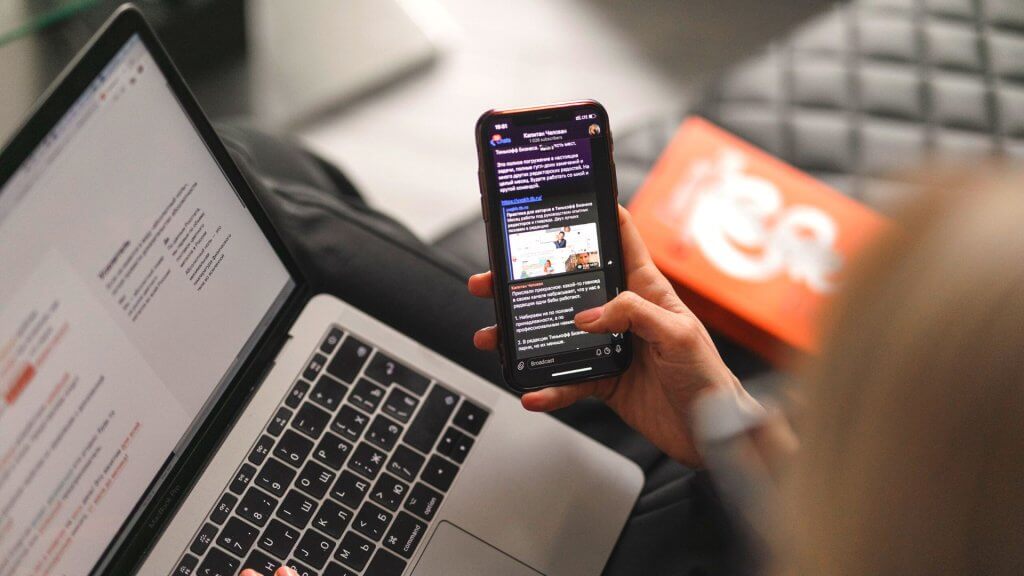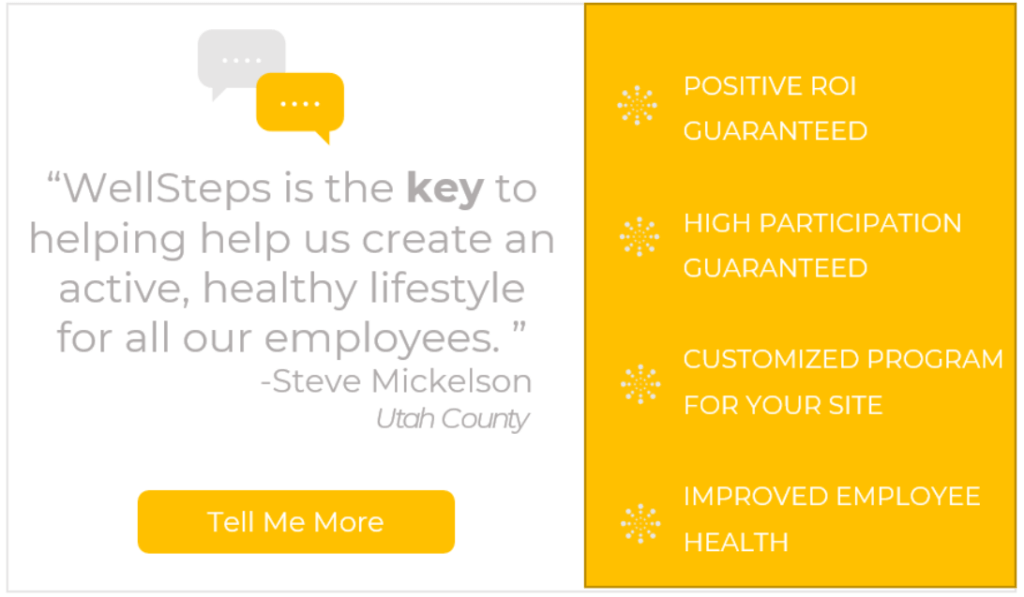Often times the number one complaint made by employees in the workplace is that the upper level management and leaders of the organization do not understand their team members’ perspectives, nor care about their well-being. Leaders can communicate support for the company wellness program, and the health of their employees through various ways in order to strengthen this relationship.

Senior Leaders Can Communicate Support For the Company Wellness Program In Easy Ways
The organization can have a wellness program in place, but if there is no communication about it, especially from leaders, it’s no different than not having a program at all. It’s also of no benefit to anyone and the desired results wanted by both employees and managers may not seem of any positive consequence. Putting a few of these methods into place avoids any tension or disregard about the well-being of anyone at work. Leaders can communicate support by:
- send personal invitations to managers to participate
- offer testimonials in meetings or through email
- lead a “Wellness Minute” in meetings
- send postcards with words of encouragement or support to employees
- include a message about wellness in the regular newsletter (Here is one ready to use)
- add wellness phrases and intentions to mission statements and company goals
- send an email before and after each campaign with a personal testimonial
When employees see that their leadership genuinely cares about their health and well being, it garners motivation for them to strive better in how they can support the organization. Great followers are inspired by their leaders and stick around when they feel as if they matter. These actions to communicate support for the company wellness program create a desirable space and culture for workers.
RELATED: Ways to Boost Employee Morale in an Organization
1. Send Personal Invitations to Managers to Participate
Let’s face it, in most companies, the bulk of employees don’t often have regular conversations or interactions with the senior leadership. They look to their own managers for the support they seek on a consistent basis. Yet the mid-level managers hardly have the same daily routines or tasks to do like their teams.
Having managers participate in the company wellness program equalizes the work relationship with employees. Everyone can see the balance of humanity when they all know that even management is participating in improving their health.

It’s up to senior leaders to encourage all of their managers to take part. Just like employees, managers aren’t always going to take the initiative on something that’s optional unless encouraged or instructed to by their own bosses.
Personally in conversation, or during individual meetings, leaders should pass on the invitation to their managers. They can include the details on what they’ll be doing to participate themselves as well. Being sure to include the benefits seen all around and express appreciation for the managers’ involvement, even beforehand.
RELATED: How to Get Leadership Support for Employee Wellness
2. Offer Testimonials in Meetings or Through Email
When all the employees of a company receive a message from the CEO or VPs of their organization that clearly wasn’t written by their secretary, the message truly connects. Instead of just typing out a memo or sending a generic letter through email, leaders can share a personal experience. Use these questions to spark ideas on how the message can be even better.
- What results did you get from participating in the last wellness campaign?
- What happened when you didn’t stay involved as much as you could have?
- What would you tell a loved one about joining the program with you?
- What goals and improvements are you personally working on right now with your health?
- Why does their participation matter for everyone as a whole?
If it’s not possible to be shared in person, you can make a selfie video talking right to your phone. Email this out instead of typing the message for an added thought that’s not going to be skimmed over.
3. Lead a “Wellness Minute” at the Start of Meetings
Change up the flow of meetings by watching a short clip about a health topic. Visit the WellSteps YouTube channel for a quick video list of ideas.
Any leaders or project heads running the meetings can share their thoughts afterward and spark a small discussion to engage everyone present. Invite others to ask questions or spread the information they just learned to others in their lives at home or outside of work.
4. Send Postcards With Words of Encouragement to Employees (Our Favorite Ways Leaders Can Communicate Support)
Have you ever gotten a postcard in the mail? It’s actually really fun because you know who sends it to you had to be very intentional about what they share. Writing a small paragraph on the card means they likely will share the most important thing that matters to them in that moment. There’s only so much space to write by hand, so even in few words, it will have the greatest impact.
The picture on the back of the card could be relevant to the message, such as a photo of the leader participating in the activity they’re encouraging. Or it could have a before and after shot of someone who’s story may inspire readers to improve their health for the better.
It may take extra time to hand write postcards to each one of your employees, but it will go a long way. Give this a try at least once a year if your organization numbers allow it. Recruit help from other senior leaders to spread the work around if needed.
5. Include a Wellness Message in the Regular Newsletter
If you have a weekly or monthly newsletter that gets read by your employees, senior leaders could be using that real estate for positive messages about the company wellness program. It needs to be more thought out than a generic “let’s do better” in this area.
Here’s how the CEO or department VP can change it up so it is actually fully digested by readers:
- share a personal story about overcoming a health challenge and what you learned from it
- talk about why you love a certain aspect about an upcoming wellness challenge
- let the employees know what the awesome reward is for participation and why you are personally going to be involved as well
- publish legitimate starting numbers of your current health measurement (such as a biometric or exercise time that you want to change) and commit to giving your final numbers after a period of time
- tell the employees when and where you’ll be in person participating in an aspect of the health program and provide an incentive for them to come visit you there
Get feedback on what messages in the newsletter are actually read or enjoyed by the employees. This should be tailored and geared toward them, not the shareholders.

6. Add Wellness Phrases and Intentions to Your Mission Statement and Company Goals
It’s shocking when a company, especially a health related company, does not have wellness indicators in their highest level mission statements and company goals. Sometimes they are so generic and lacking in genuine detail that no one can even interpret what they mean for the members of the organization, let alone their customers.
There’s no reason why the mission statement, vision, values, policies, and goals shouldn’t all reflect an ideology of health and wellness. Without it, there is no healthy organization with which to conduct business. On an annual basis, companies should reflect on and make adjustments to their guiding messages that truly represents the highest good they can convey.
RELATED: 14 Reasons Many Corporate Health and Wellness Programs Fail
7. Send an Email Before and After Each Campaign With a Personal Testimonial
This is very similar to the suggestions above, just tweaked. If most of the employees don’t read their newsletter, they’re much more likely to read an email. What is shared personally with managers and company leaders can also be shared with the entire company, especially if you have large numbers to connect with.
If you’re not able to write individual emails to everyone, versions of your message can still be tailored to different groups or departments. Call out specific things those groups of people will be uniquely connected with. That way the genuine consideration is conveyed for the well-being of everyone involved.
Next Steps on How Senior Leaders Can Communicate Support For the Company Wellness Program
By no means do you have to implement every single idea in this list. Choose a few options that support your company’s circumstances and commit to doing them. If you find that communicating support for the company wellness program does not seem to be providing the positive benefits and results that it should, there may be other changes with your wellness program that would be better.
For help with how leaders can communicate support, work with one of our expert guides here at WellSteps. Schedule a free demo with our team and discover how you can take your wellness program to the next level, support your employees and company’s bottom line, and see results unprecedented in multiple areas.
